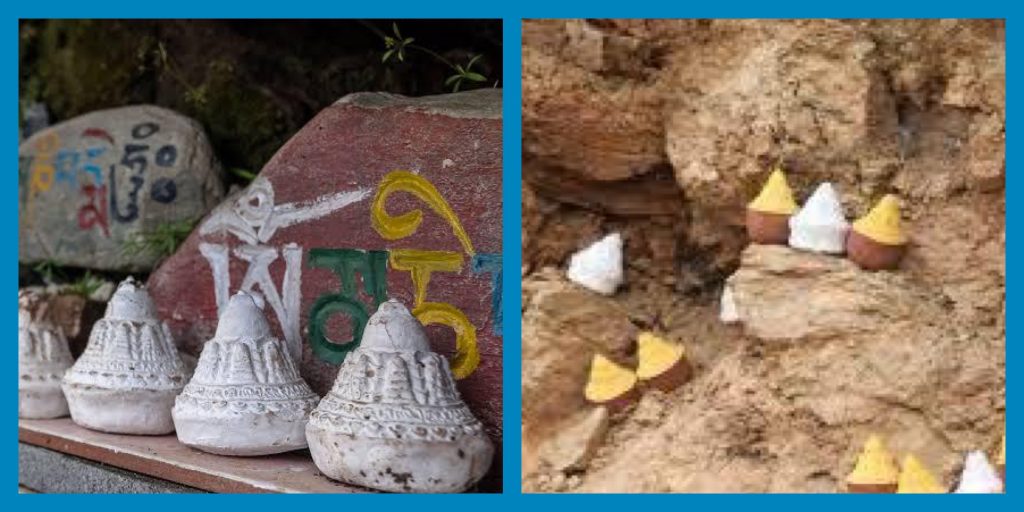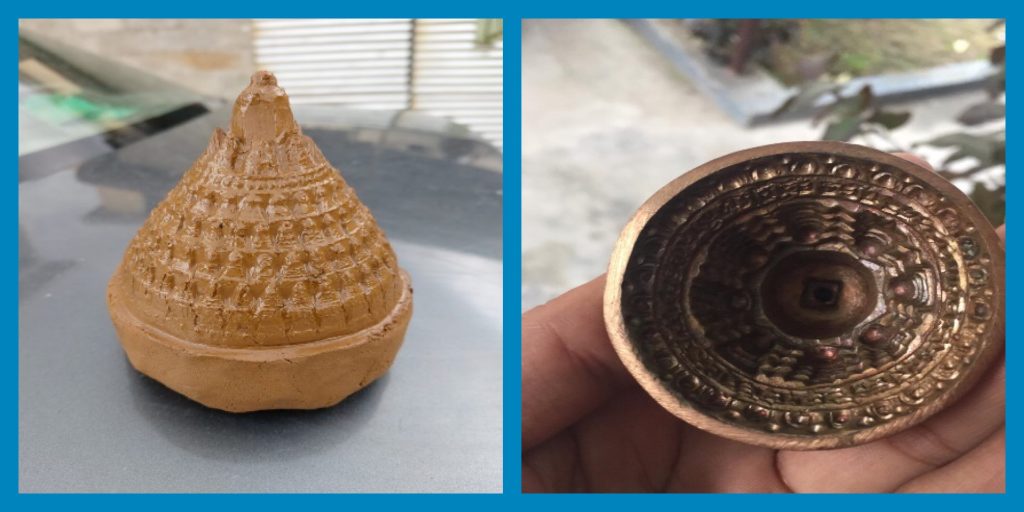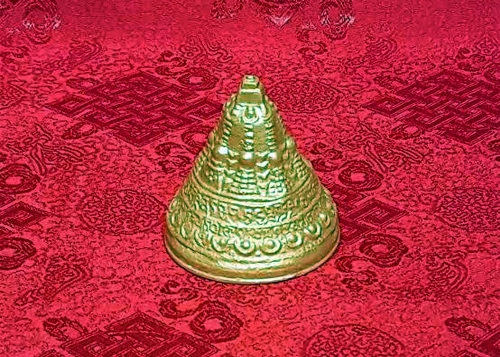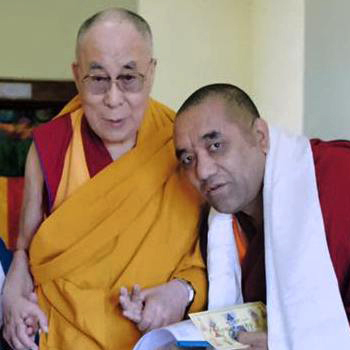100,000 TSA TSA-MAKING PROJECT
A Four-Year Project by Ngari Institute of Buddhist Dialectics (NIBD) in Saboo, Leh, Ladakh Under the Guidance of Geshe Tsewang Dorje
1. What is a tsa tsa?
A tsa tsa is a form of traditional Buddhist art that originated in India many centuries ago. Today it is found widely in the Tibetan and Himalayan region. Usually, it is the image of the Buddha, a deity, a stupa, a revered high lama, or a practitioner. Sometimes, it can also be of an ordinary person who passed away. After the cremation of their body, the bones are ground into powder to be mixed with clay and set into a mold to let it harden. Tsa tsas come in different colors, but for this project, the tsa tsas will be painted gold.
2. Where can you find tsa tsas or where would they be placed?
Tsa tsas can be placed on an altar, in a shrine or stupa, or even next to prayer wheels. Many times, they also can be found at holy sites like mountains, lakes, and meditation caves. They are a sacred object; therefore, they should be placed in a clean place.
For NIBD, the completed tsa tsas will be placed in a tsa tsa house (to be built) where regular Sur offerings will be done.

3. What motivated Geshe Tsewang to start this project?
Over the years, especially since 2020, due to COVID-19, Geshe-la has been very saddened by the demise of tens of thousands of people all around the world. He is also very distressed by the deaths of people who died other than from the pandemic. As an offering of compassion, he has decided to make these tsa tsas for the following categories of people who have passed away without families or friends nearby, without proper burial or prayers offered to them before, during, and after their deaths. Hopefully, these deceased can have a better rebirth:
(a) Those who died of COVID-19.
(b) Fetuses and babies who were aborted prematurely due to human decision or physical circumstances.
(c) Those who incurred untimely death due to natural disasters like earthquakes or hurricanes, as well as those who died of road or air accidents, plus those who were killed by someone in a premeditated or unintentional manner.
4. What are the benefits of tsa tsas?
Making, seeing, touching, or circumambulating tsa tsas is a good way to eliminate obstacles, purify negativities, and accumulate positive merits. Ladakh, which is also referred to as the Land of Stupa and Lama, will definitely create more positive energy for years to come through this project.
5. What is the project plan?
NIBD intends to make 100,000 tsa tsas over a period of four years. This is due to the harsh weather conditions, in which it is only possible to make them during the short summer months. Therefore, we estimate making 25,000 tsa tsas yearly.
6. What does our tsa tsa look like?
Following is an example of our tsa tsa. Around the outside of each tsa tsa, there are 100 mini-stupas. Its clay body will be filled with Dependent Origination Mantras, precious stones, and sacred objects from Bodhgaya. During the making of the tsa tsas, many special recitations of prayers and visualizations are required. So eventually, we are not only making 100,000 tsa tsas but also building 10 million stupas! Therefore, you can imagine the merits you are accumulating in making these tsa tsas.

7. How can you participate?
We welcome any individual, institution, or organization to participate in the effort for this merit-accumulating project. You may take part in one of the following ways:
(a) By contributing to the cost of material to make the tsa tsas, which is either US$8, Rs500, or SGD$10 for each tsa tsa. Also, you may join us,
(b) By coming over to Ngari Institute to learn how to make the tsa tsas yourself, when international travel is allowed. We welcome groups of a maximum of five people at a time, with a minimum stay of 10 days, for those who are interested. Please enquire about the cost when this travel is possible.
Contact Us:
Ngari Institute, Saboo Village, Leh, Ladakh, 194101, India
Cell phone: +91-9797 849183


